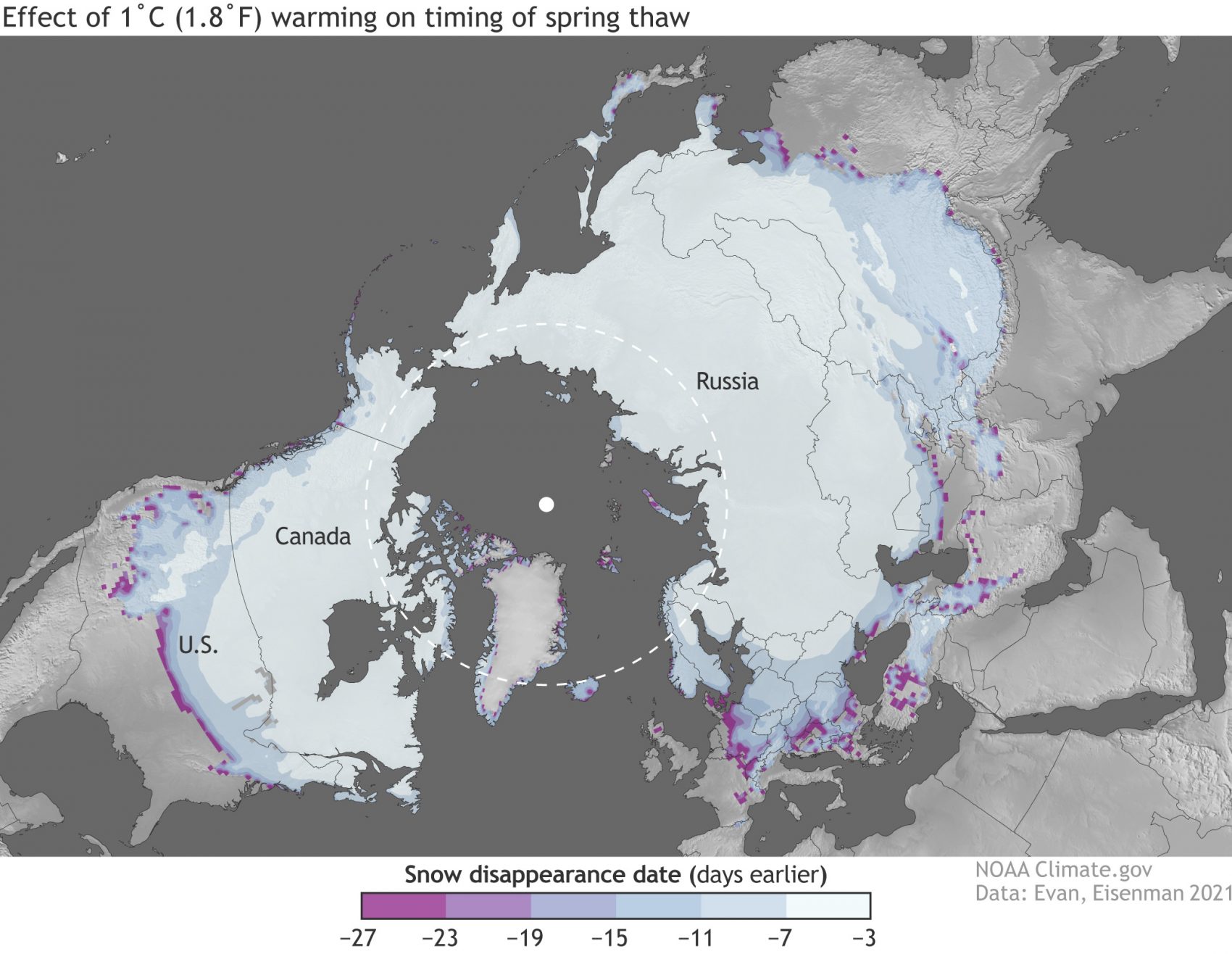
This article was originally published by Alison Stevens on Climate.gov on March 22, 2021
As Earth heats up thanks to human-caused climate change, scientists expect that winter snowpacks will melt increasingly earlier in the spring. According to a new NOAA-funded study, these impacts are already underway, but global warming isn’t impacting every region equally. While snowpack in some regions has been relatively unaffected, snowpack in other regions is melting nearly a month earlier than usual.
Based on observed snowpack and temperature data from 1982-2018, this map shows how one degree Celsius of warming advances snowpack disappearance date—the number of days earlier in the spring when all the winter snow has melted. Darker shades of gray and pink show more vulnerable regions, where one degree of warming is causing snowpack to disappear as much as 27 days earlier.
According to model results, overall, coastal (low elevation) and southern regions are more vulnerable than northern interior regions. In the United States, the snowpack disappearance dates in southern Alaska, the Cascades, Sierra Nevadas, across the lower Midwest, and along parts of the Appalachians are changing more rapidly than in regions like the Rocky Mountains and Upper Midwest. Globally, parts of the coastal Arctic, the European Alps, and lower regions of the Himalayas have been more affected, while snowpack in the northern interiors of Europe and Asia, including the central region of Russia, is disappearing just 3 days earlier.
To understand the differences, we need to look at how temperature changes throughout the year. Snowpack in regions with smaller swings in temperature between winter and summer is more vulnerable to warming than snowpack in regions with greater seasonal temperature differences. In coastal regions, for instance, the ocean acts as a big thermal regulator, making winters warmer, keeping summers cooler, and reducing the annual temperature range. The ocean’s influence means fewer days with wintertime temperatures at or below freezing (32°F or 0°C) for snow to fall and accumulate, compared to inland areas at the same latitude.
So in coastal regions like the Cascades, just one degree of warming can cause a dramatic reduction in the number of days below freezing and bring a much earlier start to spring and snowmelt. However, northern interior regions see bigger temperature swings between winter and summer, with more days annually at or below freezing for snowfall. In these regions, one degree of warming causes a smaller decrease in below-freezing days and a smaller shift in snowpack disappearance date.
In many parts of the world, mountain snowpack is a critical natural reservoir. Much of the global population, including millions of people in the western United States, depend on water stored in snowpack for drinking water, irrigation, and hydroelectric power. Snow disappearing nearly a full month earlier radically alters surface water availability, with substantial impacts for people, ecosystems, and agriculture.
This research was led by Scripps Institution of Oceanography at the University of California and funded in part by NOAA’s Climate Program Office through its Climate Observations and Monitoring (COM) program.